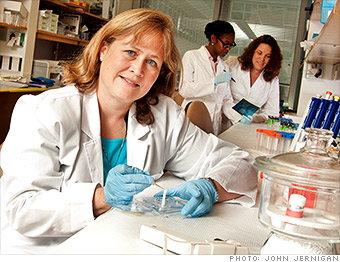Search News
CNNMoney/PayScale's top 100 careers with big growth, great pay and satisfying work.

What they do all day? The MRI, the pacemaker, artificial joints – biomedical engineers have helped make them the wonders they are today. BMEs, as they're called, work to design, create and improve medical devices such as prosthetics, artificial organs, and bioengineered skin.
How to get the job? BMEs typically have a bachelor's or master's in biomedical engineering, and may have an MBA, law degree, or M.D. as well. Employers value team players who can communicate complex ideas well; being research-oriented is another plus.
What's great? What's not? For those with a technical aptitude, it's an opportunity to make the world a better place. Every day, there's the potential to create something groundbreaking. But nine-to-fivers need not apply -- the hours can be long since exciting research doesn't tend to fit the 40-hour work week. --Kate Ashford
What they do all day? The MRI, the pacemaker, artificial joints – biomedical engineers have helped make them the wonders they are today. BMEs, as they're called, work to design, create and improve medical devices such as prosthetics, artificial organs, and bioengineered skin. --Kate Ashford
*Total jobs is estimated number of people working in broader BLS 'job family.'
Sources: PayScale.com, Bureau of Labor Statistics, and CNNMoney research